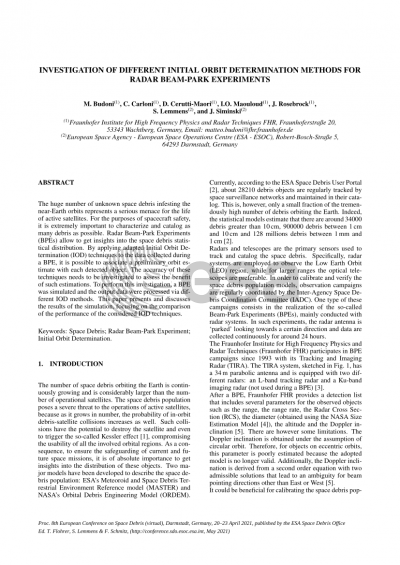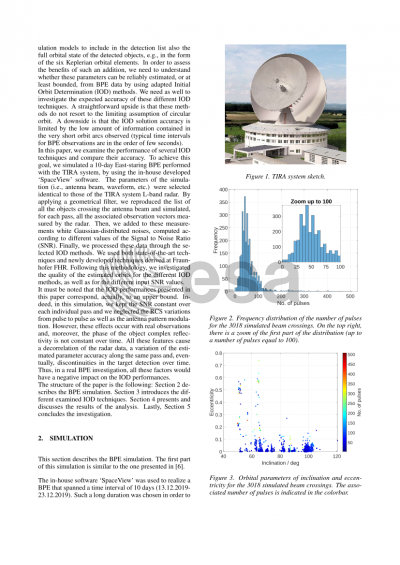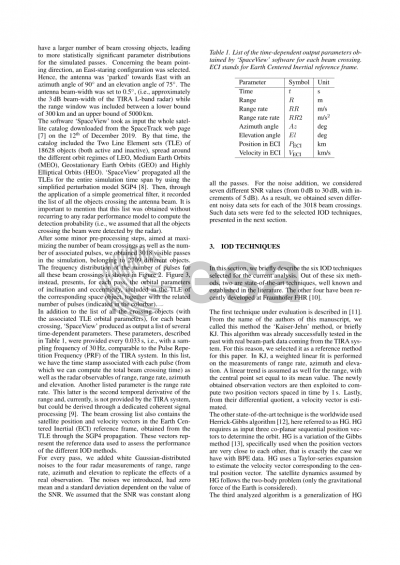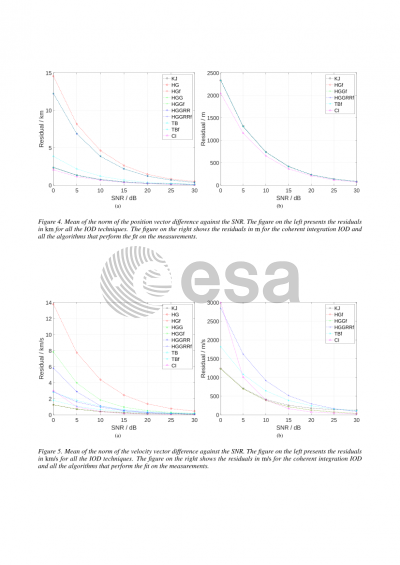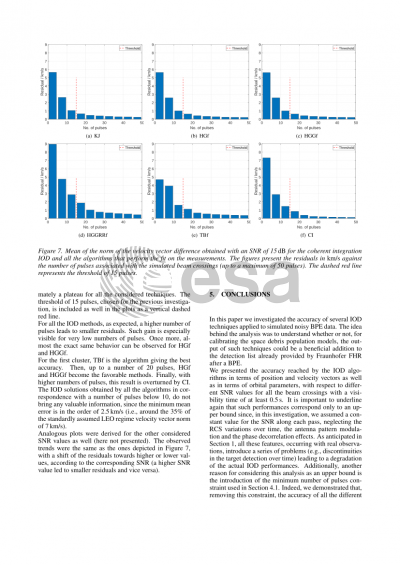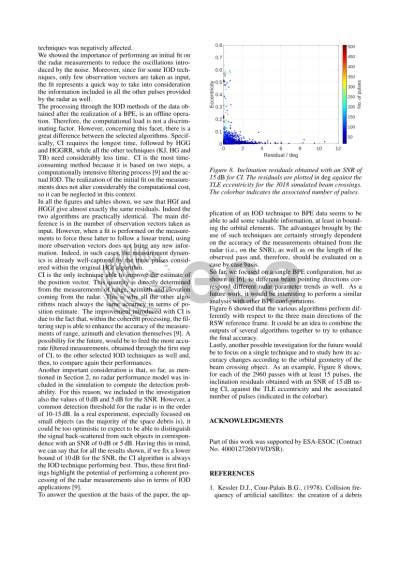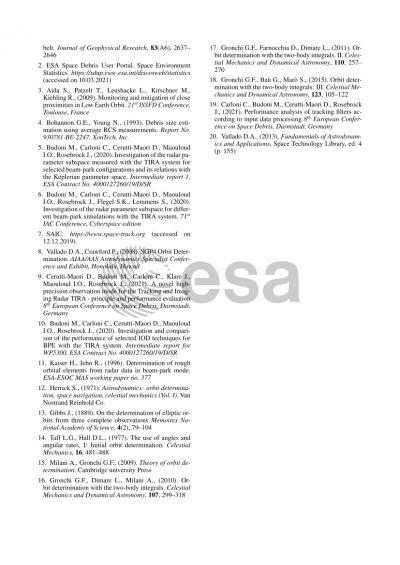Document details

Abstract
Space debris pose a threat to the operations of active satellites. Only a small fraction of the tremendously high number of debris is known and has been cataloged so far. It is of absolute importance to get insights on these object distribution for the purposes of spacecraft safety. Two major models have been developed to describe the space debris population: ESA’s Meteoroid and Space Debris Terrestrial Environment Reference model (MASTER) and NASA’s Orbital Debris Engineering Model (ORDEM). Beam Park Experiments (BPEs) are conducted regularly to calibrate and verify these models.
Fraunhofer FHR, with its Tracking and Imaging Radar (TIRA), participates in BPE campaigns since 1993. After a BPE, Fraunhofer FHR provides detection lists that include several parameters for the observed objects such as the range, the range rate, the Radar Cross Section (RCS), the diameter (obtained using the NASA Size Estimation Model), the altitude and the Doppler inclination. There are however some limitations: the altitude and the Doppler inclination are obtained under the assumption of circular orbit and the latter presents an ambiguity for beam pointing directions other than East or West.
It could be beneficial for calibrating the space debris population models to include in the detection list also the six Keplerian orbital parameters, i.e., the full orbital state of the detected objects. The rising question is whether these parameters can be reliably estimated, or at least bounded, from BPE data by using adapted Initial Orbit Determination (IOD) methods.
In order to assess the benefit of using IOD techniques for the calibration of the space debris population models, we need to investigate their expected accuracy. A straightforward upside is that these methods do not resort to the limiting assumption of circular orbit. A downside is that the IOD solution accuracy is limited by the narrow amount of information contained in the very short orbit arcs observed, e.g., typical BPE observation times are in the order of two to ten seconds.
In this paper, we examine different IOD techniques and compare their accuracy. To achieve this goal, we simulated the results of a 10-days East-staring BPE with the TIRA system using the in-house developed SpaceView software. We recorded the observation vectors associated to the passes of numerous objects. Then we performed a Monte-Carlo simulation adding noise on the beam crossing data and processing them through the selected IOD methods. We used both state-of-the-art techniques (e.g., the Herrick-Gibbs) and experimental techniques derived at Fraunhofer FHR. Following this methodology, we investigated the quality of the estimated orbits for the different IOD methods, as well as for different input Signal to Noise Ratios (SNR). Future works will include the testing on real data.
Preview
